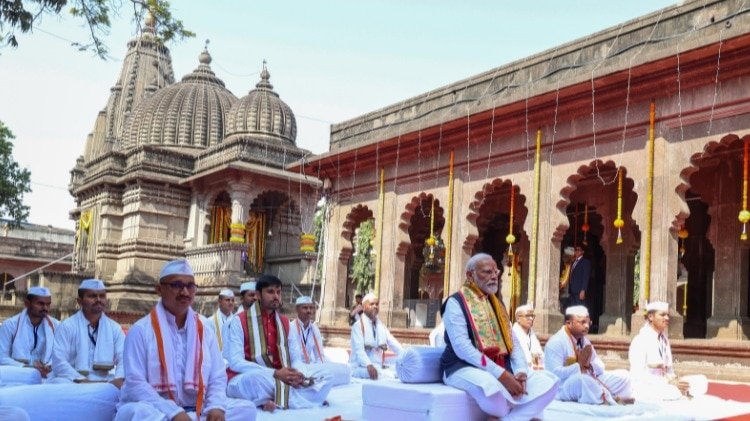Prime Minister Narendra Modi’s visit to the Shree Kalaram Temple in Nashik on Friday brought attention to the site’s historical significance, especially in connection with Dr BR Ambedkar’s satyagraha. Ambedkar had fought for the entry of Dalits to this temple in the 1930s.
On the day PM Modi started his 11-day ritual to prepare for the ‘Pran Pratistha’ of Lord Ram’s idol at the Ram Mandir in Ayodhya, he visited the temple in Nashik, Maharashtra, dedicated to Lord Ram. PM Modi performed ‘jal pujan’ on the banks of Godavari and cleaned the temple premises.
The significance of PM Modi’s visit to the Shree Kalaram Temple and its historical significance wasn’t lost on people.
“Starting Anushthan from Nashik, the sacred land of Panchavati where Prabhu Sri Ram and Mata Sita stayed during the Vanavas is remarkable. Prayers at the Kalaram Temple is also significant as Dr Ambedkar started his temple entry movement,” Prafulla Ketkar, editor of the Organiser Weekly, posted on X. The Organiser is the mouthpiece of the RSS.
The drive to distribute Ram Mandir ‘akshat‘ (sacred rice) across India was also started from a Dalit-dominated village in Ayodhya.
IMPORTANCE OF PANCHVATI
The Shree Kalaram Temple with a black Ram idol was constructed in 1782.
It stands where Lord Ram is believed to have lived during his exile, the Panchavati.
Panchavati translates to five banyan trees where, according to Ramayana, Lord Ram, Sita and Lakshman made a hut to stay. The region is also said to be where Sita was abducted by Ravan.
AMBEDKAR’S SATYAGRAH AT KALARAM TEMPLE
The Kalaram Temple, a popular holy site for Ram devotees, also happens to hold an important role in India’s Dalit movement.
Dr BR Ambedkar, in his pursuit to eradicate untouchability, led a satyagraha at the temple on March 3, 1930, demanding entry for Dalits into the sacred space.
This movement aimed to challenge the oppressive caste norms prevalent during the time.
During the satyagraha, Ambedkar, along with his 15,000 Dalit followers, peacefully picketed the temple.
The satyagraha contributed to the awakening of the oppressed castes in the region as Ambedkar knew that temple entry alone wouldn’t solve the deeper issues.
The Kalaram Temple satyagraha was not the first. Two other attempts were made before this — one in Amravati in 1928 and another in Pune in October 1929.
To restore public order, Article 144 of the Code of Criminal Procedure was imposed around the temple by the Bombay Presidency governemnt.
A month later, on April 7, on Ram Navami, Ambedkar led a procession to the temple with 200 volunteers, as certain restrictions were put on Dalits’ participation in the religious event.
A couple of days later, on April 9, members of the upper caste launched an attack on the peaceful protestors, subjecting Dalits across the state to hostile assaults during the Satyagraha, according to the Ambedkarite Today. The protestors adhered to non-violence, as Ambedkar had urged them to.
After a struggle of three more years and a few legal cases, the temple doors remained closed to Dalits.
This was the last temple satyagraha Dr Ambedkar had led. The idea of restarting the Satyagraha in 1933 met Dr Ambedkar’s disapproval.
In a letter to his associate, Bhaurao Gaikwad, Dr Ambedkar revealed, the priority of the community should be education and politics.
The Kalaram Temple satyagraha continued till 1935. The movement to fight caste discrimination resulted in Dalits being allowed to enter temples and also draw water from temple wells.
Tune In
